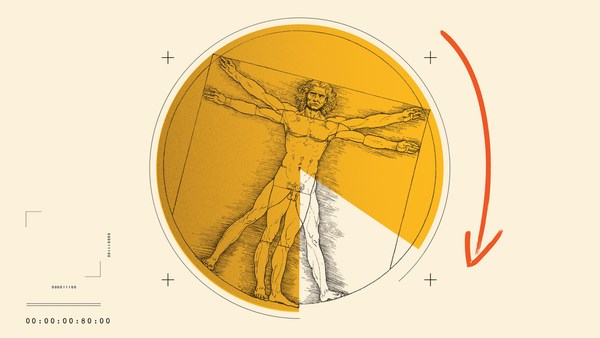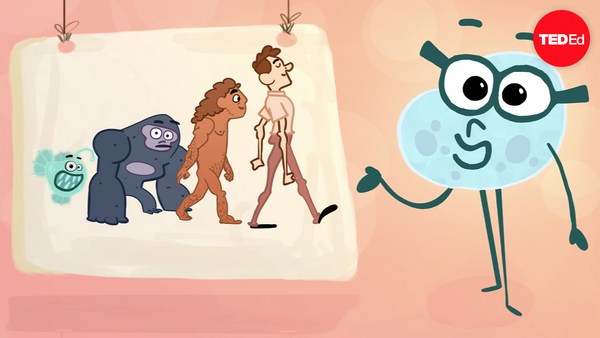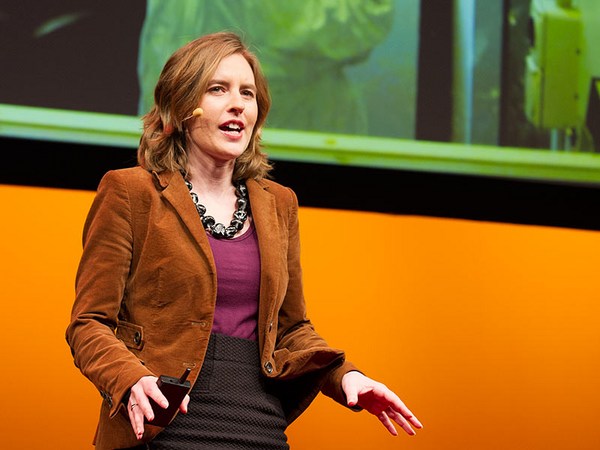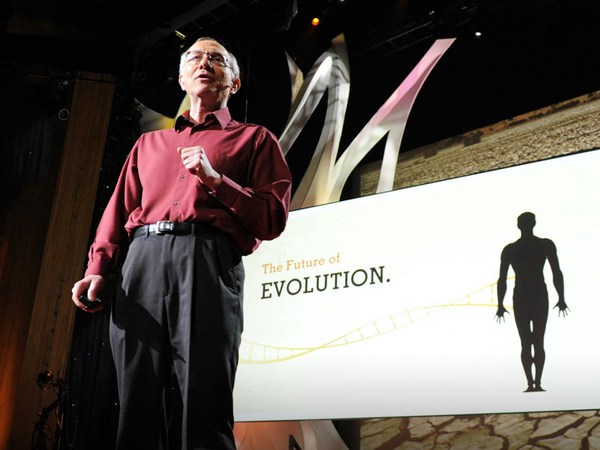When I was approximately nine weeks pregnant with my first child, I found out I'm a carrier for a fatal genetic disorder called Tay-Sachs disease. What this means is that one of the two copies of chromosome number 15 that I have in each of my cells has a genetic mutation. Because I still have one normal copy of this gene, the mutation doesn't affect me. But if a baby inherits this mutation from both parents, if both copies of this particular gene don't function properly, it results in Tay-Sachs, an incurable disease that progressively shuts down the central nervous system and causes death by age five.
For many pregnant women, this news might produce a full-on panic. But I knew something that helped keep me calm when I heard this bombshell about my own biology. I knew that my husband, whose ancestry isn't Eastern European Jewish like mine, had a very low likelihood of also being a carrier for the Tay-Sachs mutation. While the frequency of heterozygotes, individuals who have one normal copy of the gene and one mutated copy, is about one out of 27 people among Jews of Ashkenazi descent, like me, in most populations, only one in about 300 people carry the Tay-Sachs mutation. Thankfully, it turned out I was right not to worry too much. My husband isn't a carrier, and we now have two beautiful and healthy children.
As I said, because of my Jewish background, I was aware of the unusually high rate of Tay-Sachs in the Ashkenazi population. But it wasn't until a few years after my daughter was born when I created and taught a seminar in evolutionary medicine at Harvard, that I thought to ask, and discovered a possible answer to, the question "why?" The process of evolution by natural selection typically eliminates harmful mutations. So how did this defective gene persist at all? And why is it found at such a high frequency within this particular population?
The perspective of evolutionary medicine offers valuable insight, because it examines how and why humans' evolutionary past has left our bodies vulnerable to diseases and other problems today. In doing so, it demonstrates that natural selection doesn't always make our bodies better. It can't necessarily. But as I hope to illustrate with my own story, understanding the implications of your evolutionary past can help enrich your personal health.
When I started investigating Tay-Sachs using an evolutionary perspective, I came across an intriguing hypothesis. The unusually high rate of the Tay-Sachs mutation in Ashkenazi Jews today may relate to advantages the mutation gave this population in the past. Now I'm sure some of you are thinking, "I'm sorry, did you just suggest that this disease-causing mutation had beneficial effects?" Yeah, I did. Certainly not for individuals who inherited two copies of the mutation and had Tay-Sachs. But under certain circumstances, people like me, who had only one faulty gene copy, may have been more likely to survive, reproduce and pass on their genetic material, including that mutated gene.
This idea that there can be circumstances in which heterozygotes are better off might sound familiar to some of you. Evolutionary biologists call this phenomenon heterozygote advantage. And it explains, for example, why carriers of sickle cell anemia are more common among some African and Asian populations or those with ancestry from these tropical regions. In these geographic regions, malaria poses significant risks to health. The parasite that causes malaria, though, can only complete its life cycle in normal, round red blood cells. By changing the shape of a person's red blood cells, the sickle cell mutation confers protection against malaria. People with the mutation aren't less likely to get bitten by the mosquitoes that transmit the disease, but they are less likely to get sick or die as a result. Being a carrier for sickle cell anemia is therefore the best possible genetic option in a malarial environment. Carriers are less susceptible to malaria, because they make some sickled red blood cells, but they make enough normal red blood cells that they aren't negatively affected by sickle cell anemia.
Now in my case, the defective gene I carry won't protect me against malaria. But the unusual prevalence of the Tay-Sachs mutation in Ashkenazi populations may be another example of heterozygote advantage. In this case, increasing resistance to tuberculosis. The first hint of a possible relationship between Tay-Sachs and tuberculosis came in the 1970s, when researchers published data showing that among the Eastern European-born grandparents of a sample of American Ashkenazi children born with Tay-Sachs, tuberculosis was an exceedingly rare cause of death. In fact, only one out of these 306 grandparents had died of TB, despite the fact that in the early 20th century, TB caused up to 20 percent of deaths in large Eastern European cities.
Now on the one hand, these results weren't surprising. People had already recognized that while Jews and non-Jews in Europe had been equally likely to contract TB during this time, the death rate among non-Jews was twice as high. But the hypothesis that these Ashkenazi grandparents had been less likely to die of TB specifically because at least some of them were Tay-Sachs carriers was novel and compelling. The data hinted that the persistence of the Tay-Sachs mutation among Ashkenazi Jews might be explained by the benefits of being a carrier in an environment where tuberculosis was prevalent.
You'll notice, though, that this explanation only fills in part of the puzzle. Even if the Tay-Sachs mutation persisted because carriers were more likely to survive, reproduce and pass on their genetic material, why did this resistance mechanism proliferate among the Ashkenazi population in particular? One possibility is that the genes and health of Eastern European Jews were affected not simply by geography but also by historical and cultural factors. At various points in history this population was forced to live in crowded urban ghettos with poor sanitation. Ideal conditions for the tuberculosis bacterium to thrive. In these environments, where TB posed an especially high threat, those individuals who were not carriers of any genetic protection would have been more likely to die. This winnowing effect together with a strong cultural predilection for marrying and reproducing only within the Ashkenazi community, would have amplified the relative frequency of carriers, boosting TB resistance but increasing the incidence of Tay-Sachs as an unfortunate side effect.
Studies from the 1980s support this idea. The segment of the American Jewish population that had the highest frequency of Tay-Sachs carriers traced their descent to those European countries where the incidence of TB was highest. The benefits of being a Tay-Sachs carrier were highest in those places where the risk of death due to TB was greatest. And while it was unclear in the 1970s or '80s how exactly the Tay-Sachs mutation offered protection against TB, recent work has identified how the mutation increases cellular defenses against the bacterium. So heterozygote advantage can help explain why problematic versions of genes persist at high frequencies in certain populations.
But this is only one of the contributions evolutionary medicine can make in helping us understand human health. As I mentioned earlier, this field challenges the notion that our bodies should have gotten better over time. An idea that often stems from a misconception of how evolution works. In a nutshell, there are three basic reasons why human bodies, including yours and mine, remain vulnerable to diseases and other health problems today. Natural selection acts slowly, there are limitations to the changes it can make and it optimizes for reproductive success, not health.
The way the pace of natural selection affects human health is probably most obvious in people's relationship with infectious pathogens. We're in a constant arms race with bacteria and viruses. Our immune system is continuously evolving to limit their ability to infect, and they are continuously developing ways to outmaneuver our defenses. And our species is at a distinct disadvantage due to our long lives and slow reproduction. In the time it takes us to evolve one mechanism of resistance, a pathogenic species will go through millions of generations, giving it ample time to evolve, so it can continue using our bodies as a host.
Now what does it mean that there are limitations to the changes natural selection can make? Again, my examples of heterozygote advantage offer a useful illustration. In terms of resisting TB and malaria, the physiological effects of the Tay-Sachs and sickle cell anemia mutations are good. Taken to their extremes, though, they cause significant problems. This delicate balance highlights the constraints inherent in the human body, and the fact that the evolutionary process must work with the materials already available. In many instances, a change that improves survival or reproduction in one sense may have cascading effects that carry their own risk. Evolution isn't an engineer that starts from scratch to create optimal solutions to individual problems. Evolution is all about compromise.
It's also important to remember, when considering our bodies' vulnerabilities, that from an evolutionary perspective, health isn't the most important currency. Reproduction is. Success is measured not by how healthy an individual is, or by how long she lives, but by how many copies of her genes she passes to the next generation. This explains why a mutation like the one that causes Huntington's disease, another degenerative neurological disorder, hasn't been eliminated by natural selection. The mutation's detrimental effects usually don't appear until after the typical age of reproduction, when affected individuals have already passed on their genes.
As a whole, the biomedical community focuses on proximate explanations and uses them to shape treatment approaches. Proximate explanations for health conditions consider the immediate factors: What's going on inside someone's body right now that caused a particular problem. Nearsightedness, for example, is usually the result of changes to the shape of the eye and can be easily corrected with glasses. But as with the genetic conditions I've discussed, a proximate explanation only provides part of the bigger picture. Adopting an evolutionary perspective to consider the broader question of why do we have this problem to begin with -- what evolutionary medicine calls the ultimate perspective -- can give us insight into nonimmediate factors that affect our health. This is crucial, because it can suggest ways by which you can mitigate your own risk or that of friends and family.
In the case of nearsightedness, some research suggests that one reason it's becoming more common in some populations is that many people today, including most of us in this room, spend far more time reading, writing and engaging with various types of screen than we do outside, interacting with the world on a bigger scale. In evolutionary terms, this is a recent change. For most of human evolutionary history, people used their vision across a broader landscape, spending more time in activities like hunting and gathering. The increase in recent years in what's termed "near work," focusing intensely on objects directly in front of us for long periods of time, strains our eyes differently and affects the physical shape of the eye. When we put all these pieces together, this ultimate explanation for nearsightedness -- that environmental and behavioral change impact the way we use our eyes -- helps us better understand the proximate cause. And an inescapable conclusion emerges -- my mother was right, I probably should have spent a little less time with my nose in a book.
This is just one of many possible examples. So the next time you or a loved one are faced with a health challenge, whether it's obesity or diabetes, an autoimmune disorder, or a knee or back injury, I encourage you to think about what an ultimate perspective can contribute. Understanding that your health is affected not just by what's going on in your body right now, but also by your genetic inheritance, culture and history, can help you make more informed decisions about predispositions, risks and treatments.
As for me, I won't claim that an evolutionary medicine perspective has always directly influenced my decisions, such as my choice of spouse. It turned out, though, that not following the traditional practice of marrying within the Jewish community ultimately worked in my favor genetically, reducing the odds of me having a baby with Tay-Sachs. It's a great example of why not every set of Ashkenazi parents should hope that their daughter marries "a nice Jewish boy."
(Laughter)
(Audience) Woo-hoo!
More importantly, though, the experience of learning about my own genes taught me to think differently about health in the long run, and I hope sharing my story inspires you to do the same.
Thank you.
(Applause)





